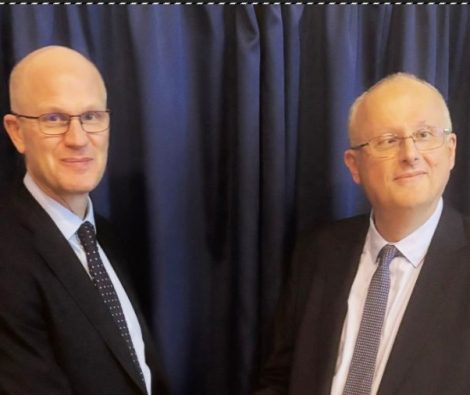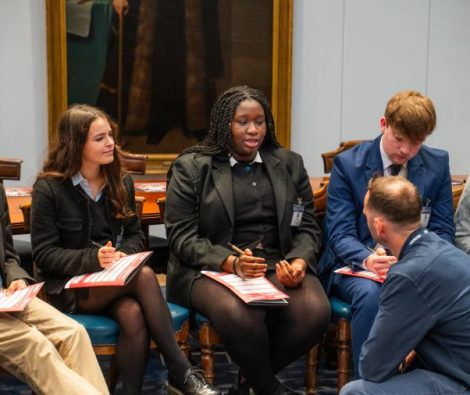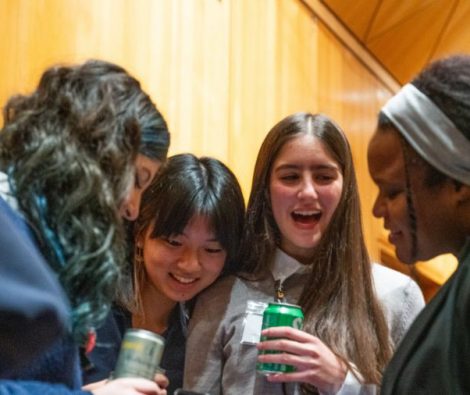Dr Eliot Benbow, an alumnus of Queen Mary University London, is now a researcher at the Museum of London. His doctoral thesis was on ‘The Shrine, the Marketplace and the Home: Forms of Lay Devotion in London during the Long Fifteenth Century (c.1370 – 1530) for which he used some archival records in the Hall.
In this article Eliot provides some of the findings of his original research which touches upon our earliest members.
His work reveals the huge variety of retail wares that our early members sold. This vastly expands on the understanding of ‘small wares’ often mentioned along with trading in hats as the origin of our Company. Early members came in two classes, those who were haberdashers of hats and those (as described here) who were the purveyors of an astonishing range of ‘small wares’.
The Haberdashers, perhaps more so than any other company in the “Great Twelve” experienced a period of unprecedented growth in both size and prosperity in the later Middle Ages. From the earliest records we have for Company Wardens, recorded in 1328, until surviving Company records begin in the 1520s the craft went through a meteoric rise through the civic hierarchies.
Despite the lack of internal company evidence and documents for this period, hundreds of London Haberdashers can be found in civic and legal records. I have compiled a handlist of around 650 individuals (a list that is growing all the time!) that covers the period c. 1380-1550. This has provided new insights into the early membership of the Company which has often been underexplored. By contrast, only around 35 Haberdashers have been thus far included in the Medieval Londoners Database.
Through this documentation, we can see where Haberdashers lived in London. Many were clustered in the northwestern parts of the City such as the parishes of St Martin Ludgate and St Michael le Querne. Increasingly, many also began to live around London Bridge in the parishes of St Magnus the Martyr and St Botolph Billingsgate – reflecting the need to be close to the river to engage with overseas trade. By the 1470’s and 1480’s a number of prominent Haberdashers rented and held properties on London Bridge, a prime place to sell their wares.
Much of the growth of the Company was driven through increasing trade with the Low Countries. The Haberdashers were able to import great quantities of manufactured goods from the ports of Antwerp, Bergen-op-Zoom and Middelburg. This also allowed them to engage more prominently in the export of cloth, England’s principal industry in this period. As a result, they were also often members of the Merchant Adventurers.
Compared to the Mercers and Grocers, however, who tended to import the more expensive and exotic commodities of the upper-classes, haberdashers most often imported the materiality of everyday life. An astonishing range of clothes, dress accessories, children’s toys, games, cutlery and stationery among many other genres of goods appear in the compiled records of the London Customs Accounts. These accounts record the imports and exports that were taxed through the Port of London in the later Middle Ages. They provide a fascinating window into the everyday trading of hundreds of haberdashers in a particularly formative period for the Company.
The cargoes that Haberdasher and Merchant Adventurer Robert Soper (fl. 1484-1521) imported in June 1514 nicely indicate these wide-ranging commercial interests:
Education
The range of goods Haberdashers traded in was so broad in this period that the term “diverse Haberdashery” became a common term in the accounts and one that acted as a shorthand for general merchandise. This indicates a widening of the now traditional view of Haberdashery that is more restricted to small articles of clothing, fabric and accessories.
Furthermore, the Haberdashers were heavily involved in importing and selling the props of later medieval devotion. Around twenty-five members of the company imported hundreds of shipments of rosary beads (known as “paternosters” or “bedes” in the 15th century) in shipments often totalling tens and hundreds of thousands. Alongside were brought in great quantities of images, statuettes and figurines, painted cloths and tapestries that would be hung up around the home. These imports were overwhelmingly of cheaper materials such as lead, tin, pewter, wood, bone, and glass. Which would have been available to a wide audience and often replicated the more expensive forms of imagery in smaller and cheaper emulations for domestic usage.
Much of this cheap materiality was catering to the increasing living standards of Londoners. It has been estimated that real wages improved markedly in the decades after the Black Death and especially in the 15th century – when prices also decreased. The Haberdashers enthusiastically promoted and benefitted this increased development in consumer spending. At times, this came at the expense of smaller artisanal companies, who in 1464 and 1484 lobbied for import bans on many of the commodities Haberdashers were trading.
Finally, while the London company was vital in this trade, equally important were the large numbers of alien [i.e. overseas born] Haberdashers who traded in and around London in this period. Many of these Haberdashers lived in Southwark which had a separate jurisdiction to the City of London, and thus allowed them to operate outside the Company. However, they were regularly trading, importing and co-operating with their Londoner colleagues and very often appear on the same ships as the Londoners. It seems that some did also join the London company. One Laurence Swarfeld, an Antwerp native was recorded as a London Haberdasher in documents of the 1470s and 1480s. These strong connections would continue well into the 16th and 17th centuries.
To summarise, there is a great wealth of data and information that can be uncovered about the Haberdashers from their emergence in the 14th century through to their establishment as one of the great livery companies by the 16th. In doing so we can also illuminate the lives of thousands of merchants and artisans of a wide variety of social backgrounds, and the men and women who were instrumental in supplying Londoners with the goods of everyday living.



